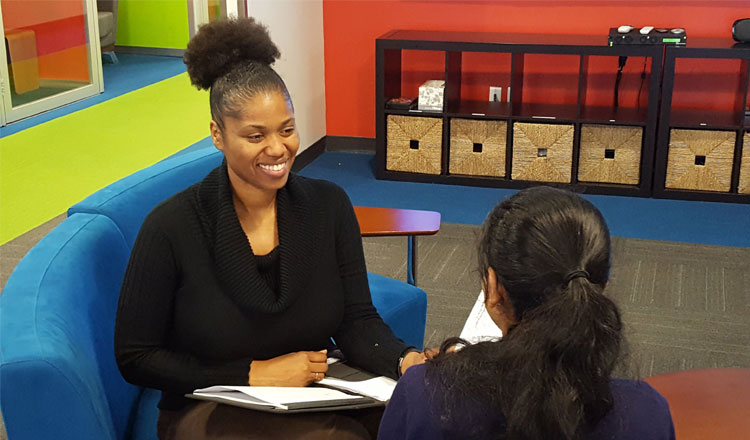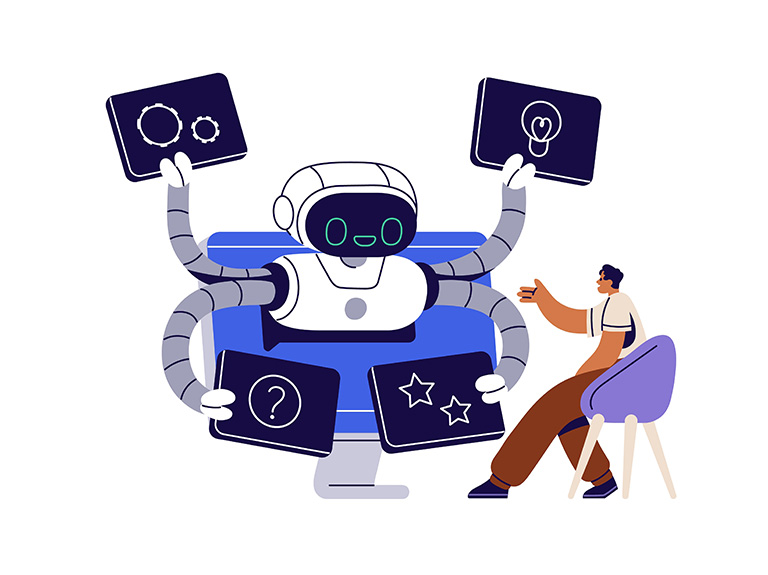
By Sydeaka Watson
I grew up hearing that I could do or become whatever I wanted. However, without having concrete examples of others who shared my skill and potential, it was hard to believe a scientific career was truly possible.
I’ve always liked solving problems. As a senior data scientist in AT&T’s Chief Data Office, the role is a natural fit.
I use a variety of technical tools and modeling strategies to mine data. In a nutshell, I help the business improve the customer experience – think AT&T retail store enhancements – by spotting key insights in large datasets.
The technology’s always changing, so I am always learning new things. That’s what I love about it.
My view of scientific careers didn’t always seem full of limitless possibilities. Growing up in New Orleans, math teachers were the only role models who appeared as passionate as I was about math. I didn’t know that other types of careers in mathematics were accessible. So, naturally math teacher is what I decided to become. “Math researcher,” “math professor,” and earning a Ph.D. were all foreign concepts to me. I certainly wasn’t aware of various types of analytics careers in the corporate space.
However, once I decided to make the transition from math teacher to data scientist, I looked for mentors that could help me to build my network and my brand. Having many people in my path who identified potential within me that I, honestly, didn’t see in myself was a blessing.
My mentors were the North Stars of my career progression. I can’t overstate the importance of mentoring and the impact it had on my career trajectory. There are so many young African-Americans in underserved communities who, like me, are unaware of scientific career fields. Ones that are also within their reach.
When young minorities with aspirations for a STEM career lack role models or mentors in their lives – the path to achieving success can seem bleak. They need role models to help show what’s possible and help fill the gap in STEM.
Every step of the way, I had at least one person in my corner to help me. They knew about scholarships and internship opportunities. They introduced me to other people they thought could be instrumental in shaping my career. More importantly, they helped me to realize I wasn’t alone in doubting myself or feeling inadequate. It was especially important to hear them share their successes and their failures.
I’ve learned there are no superheroes. I never stopped looking for mentorship opportunities along my path. The learning and growing process never ends.
At AT&T, inspirational people surround me. I foster relationships with others in technical and leadership positions who help me remain connected and focused.
I appreciate the sacrifices many have made before me so I could be in the position I’m in today. I don’t take that lightly, and that’s why I pay it forward. For several years, I served as a mentor in a formal mentoring initiative organized through the American Statistical Association Committee on Minorities in Statistics. As a member of Women of AT&T, I also volunteered in the Dallas chapter of Girls Who Code. Equally important are the one-on-one relationships I’ve developed with individual minority students. I always seek out opportunities to illuminate their path to scientific careers.
It is important that those in the STEM profession aggressively work to increase representation of African-Americans and all minorities in STEM fields in general and, in particular, STEM leadership roles to help fill the gap that exists. I encourage other scientists to share their stories with young people so they can see themselves in these roles before even considering a career in the sciences. Of course, they may decide to pursue a different career path, and that’s fine.
The important thing is they know the opportunities exist. That’s the key to closing the STEM gap.


